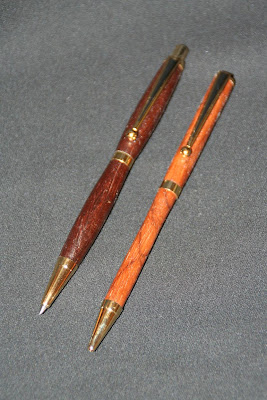I stumbled on this fascinating article in The Atlantic magazine yesterday: "Signing Off: The Slow Death of the Signature in a PIN-Code World." The bottom line of the article is that something that used to be one of the defining elements of our identity - our signature - is going the way of the dodo, the Edsel, and a useful and functioning Congress.
There was a time not so long ago when signing your name on the proverbial dotted line was a big deal. It meant that you had committed yourself to something, agreed with a position, took on a debt, acknowledged receipt of an item. The ink you put on paper was a visible and indelible (well, pretty much) symbol of your honor and commitment.
It's different now.
Today, when the UPS or FedEx guy shows up at the door and needs a signature, he hands you an electronic pad, on which you make a few odd marks with a stylus. When you use your credit card in most stores, you "sign" an electronic capture window ... and your "signature" usually looks absolutely nothing at all like your real signature. In many cases, you don't even need an electronic signature - you "sign" by entering a PIN (personal identification number) that transfers your digital credentials to the correct spot on a computer-generated form.
Somehow, I just don't think this is right. Call me a luddite, but I think there's something vital and important about a real, as opposed to a digital signature. Would the Declaration of Independence have been as impressive and meaningful without the bold statement made by John Hancock?

Indeed, even today we speak of "putting your John Hancock" on a document. "Putting my PIN on the line" doesn't have the same ring to it.
I have other problems with the spread of digital signing technology, too. I have a problem with the fact that my signature has been digitally captured (if poorly) and stored in zillions of different places. The possibility exists that someone could steal that digital copy and use it to sign other things in my name. Not everyone agrees with me, though. Consider this excerpt from the Atlantic article:
"Fraud rates on credit or debit cards that are signature-based are much higher than on cards with PIN protection," notes Chris Hawkins in his book A History of Signatures: From Cave Paintings to Robo-Signings. In 2005, a consulting firm found that signature-based debit card fraud rates were 15 times higher than PIN-based fraud rates.
You'll pardon me if I don't find that comforting.
Electronic signatures may be the way of the future, but I still prefer my beloved dipping pens ...

and the beautiful turned-wood pen and pencil set Agnes made for me a few years ago ...

To me, ink on paper is just more ... real. And in a time when things that are real are few and far between, that's a comforting thing.
Have a good day. Be here tomorrow for Cartoon Saturday.
More thoughts then.
Bilbo
4 comments:
I'm embarassed by my signature scrawl to begin with; and those electronic pens make it practically illegible.
oh god..I hate the electronic signature pen thing. It never looks like my signature..EVER!!
I don't even try to be legible on the electronic pads.
I agree with you Bilbo. Remember, as a child, practicing your signature over and over so that it would look good?
When I used to work in retail, people would be upset when I compared a signature to their card or said they had to actually sign rather than just draw a line. And this was for their own protection!
It was amazing how many people didn't even sign their cards and explained it was so their signature couldn't be copied. They were always surprised when I pointed out that anyone could sign it and then have that false signature compared to what they wrote at the store.
I've heard it suggested by banks to write "please check ID" on the signature line as a way to prevent fraud. Most stores don't even check signatures.
Post a Comment